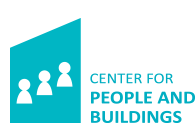The Evolving Workplace
September 2024 | Gijs Brouwers, Maaike Niekel, Monique Arkesteijn, Susanne Colenberg, Henk-Jan Hoekjen
In workplace design and management, standards for square meters per person and average occupancy of workstations are often used to assess the fit between the number of employees and the availability of workspace and workstations. However, levels of occupancy may be experienced differently by individuals depending on the situation. The purpose of this paper is to provide an overview of factors that may influence employees’ perception of occupancy at the office. This knowledge could support designers and managers in their decisions and provide a basis for further research in this relatively unexplored territory.
This study is embedded in environmental psychology and its theory about the perception of occupancy. The perception of occupancy is characterized by a perceived (mis)fit between personal demand and the availability of space. In high-density situations, individuals may experience crowding whereas in low-density situations individuals may experience isolation, depending on environmental factors, social factors, and personal factors. It is not entirely clear which and how factors influence perceived occupancy in workspaces. Articles on the experience of occupancy in office environments were collected and analysed in a systematic literature review following PRISMA guidelines.
The preliminary results of the literature review show that environmental, social, and personal factors influence perceived occupancy in workspaces. Environmental factors include openness of workspaces, acoustics, plants, workspaces, personalization of workspace, and outside view. Social factors include territoriality, personal space, and culture. Personal factors are stimulus screening, inhibitory ability, task complexity, employee needs, and work pressure.
The experience of occupancy is a relatively unexplored topic in workspace research. By adopting a human-centered perspective on occupancy, this study contributes to a better understanding of discrepancies between organizations’ measures of occupancy and the experience of occupancy by employees.
THEMA'S
Conceptkeuze | UitwerkingContactpersoon

